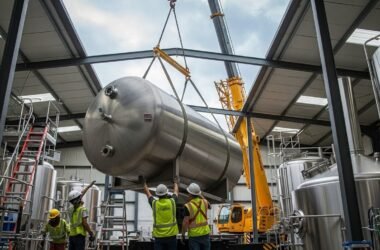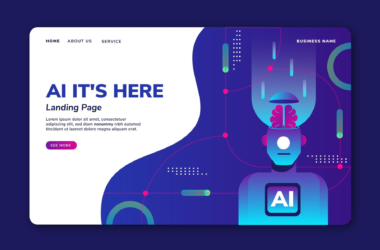The landscape of application development is evolving rapidly, with organizations under pressure to deliver high-quality applications faster than ever. Automation testing has become essential in meeting these demands, but while many companies embrace automation, the adoption of codeless automation tools varies. Ignoring codeless automation in 2024 can lead to a series of hidden costs that can significantly impact an organization’s productivity, profitability, and competitive edge. This blog will explore these hidden costs and explain why adopting codeless automation is crucial in today’s development environment.
The Hidden Costs of Neglecting Codeless Automation
Neglecting codeless automation can result in a range of operational, financial, and competitive setbacks. These hidden costs can accumulate over time, affecting long-term growth and success.
Operational Inefficiencies and Bottlenecks
Choosing not to adopt codeless automation can lead to significant operational inefficiencies, often due to the limitations of traditional testing methods. Traditional automation testing requires skilled testers with coding knowledge, but not all testers possess this expertise. This gap creates bottlenecks, as automation engineers are needed to handle script creation and maintenance, leading to testing delays and slower development cycles.
Manual scripting is time-consuming and can be error-prone, resulting in undetected defects or rework. Codeless automation tools, with visual interfaces and AI-driven features, allow for quicker test creation and execution without needing extensive coding knowledge. By simplifying automation, codeless tools empower more team members to contribute to testing, reduce bottlenecks, and improve overall efficiency.
Financial Implications
Ignoring codeless automation can have a substantial financial impact that may go unnoticed initially but can grow over time. Here are some key financial consequences:
- Higher Labor Costs: Relying on traditional automation requires skilled engineers to build and maintain test scripts. These professionals command higher salaries and could be better utilized on strategic tasks rather than script maintenance. With codeless automation tools, organizations can involve a broader range of team members in automation, reducing the need for specialized personnel and lowering labor costs.
- Longer Time to Market: In a competitive landscape, delays in releasing high-quality applications can affect customer satisfaction and revenue. Testing delays extend the development timeline, reducing time-to-market and impacting profitability. Codeless automation speeds up test creation and execution, helping teams meet release schedules, improve user satisfaction, and protect market share.
- Increased Cost of Fixing Defects: The longer a defect goes undetected, the more expensive it is to fix. Traditional automation, with slower test creation and limited coverage, increases the risk of defects slipping through. Codeless automation enables faster and broader testing, helping to catch issues earlier and minimizing rework costs.
- Lost Opportunity for Strategic Focus: Without codeless automation, valuable resources are spent on manual test creation and maintenance, diverting efforts from strategic initiatives. Embracing codeless automation frees up resources, allowing teams to focus on innovation, product quality, and exploring new opportunities.
Competitive Disadvantages
In a rapidly evolving market, ignoring codeless automation can hinder an organization’s competitiveness. As more companies leverage codeless automation tools, those that don’t may find it increasingly difficult to keep up.
- Falling Behind in Innovation: Codeless automation allows teams to work faster, collaborate better, and deliver applications with greater quality. Organizations that neglect this approach risk falling behind as competitors leverage codeless automation to innovate faster and capture more market share.
- Customer Dissatisfaction: Slow releases, defects, and a lack of new features can lead to customer dissatisfaction. Codeless automation helps organizations accelerate their release cycles and maintain high quality, which is crucial for meeting customer expectations and retaining market share.
- Stagnation in Innovation: Without the efficiency gains of codeless automation, teams may spend excessive time on maintenance rather than exploring new possibilities. This stagnation can cause an organization to lose relevance as competitors use codeless automation to explore new features and technologies.
Broader Implications of Neglecting Codeless Automation
The decision to ignore codeless automation in 2024 has broader implications that extend beyond operational, financial, and competitive drawbacks.
1. Impact on Team Morale and Retention
The pressures of manual testing and script maintenance can lead to frustration, burnout, and high turnover among testers. Codeless automation tools alleviate these challenges, streamlining processes and reducing repetitive tasks. Simplifying test creation and execution improves team morale and creates a more positive work environment.
Moreover, organizations that invest in codeless automation tools demonstrate a commitment to innovation and team growth. Providing team members with modern tools enhances job satisfaction, potentially improving retention rates.
2. Challenges with Scalability and Sustainability
As companies grow and application portfolios expand, the need for scalable testing solutions becomes paramount. Traditional automation frameworks can struggle to keep pace with this growth, resulting in scalability challenges that slow down development and release cycles.
Codeless automation supports scalable testing across teams, projects, and environments. By overlooking codeless automation, organizations may encounter limitations in scalability, hindering their ability to grow and adapt in a dynamic market.
3. Missed Opportunities with AI and Machine Learning Integration
Codeless automation tools increasingly incorporate AI and machine learning features to optimize testing workflows. Organizations that avoid codeless automation risk missing out on these advanced capabilities, which can enhance efficiency, accuracy, and insights.
AI-driven features in codeless automation tools can automate complex tasks and provide valuable analytics, reducing the need for manual intervention. Organizations that do not adopt codeless automation are at a disadvantage in the AI-driven future of application testing, missing out on opportunities to streamline processes and improve quality.
Conclusion: The Cost of Inaction
The hidden costs of neglecting codeless automation in 2024 include operational inefficiencies, financial losses, and competitive disadvantages. As application development accelerates, organizations must embrace codeless automation to stay relevant, competitive, and efficient.
Ignoring codeless automation risks putting organizations at a disadvantage, with higher labor costs, slower releases, missed market opportunities, and lower customer satisfaction. Adopting codeless automation is more than just a cost-saving measure; it is a strategic investment in efficiency, quality, and growth.
To keep pace with industry demands and capitalize on new opportunities, organizations should prioritize codeless automation tools as a core component of their application development strategy. The high costs of inaction make codeless automation a necessary step for any forward-thinking organization in 2024.








